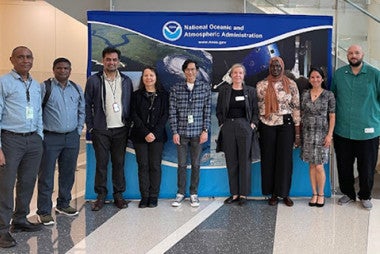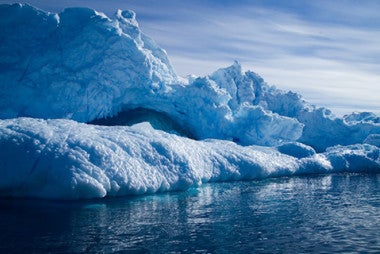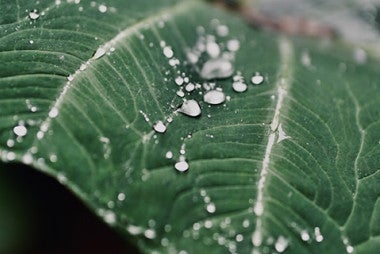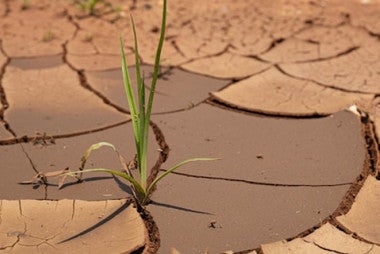How to Monitor the Microscopic Community of Puget Sound

Dr. Alexis Fischer, CPAESS Associate Scientist who works at NOAA's Fisheries as a biological oceanographer and phytoplankton ecologist.
CPAESS Associate Scientist, Alexis Fischer joined us in 2021 to work with the NOAA Fisheries. They are a biological oceanographer and phytoplankton ecologist, and their work is instrumental in keeping folks healthy while they enjoy their seafood.
Most of Alexis’ research involves the use of an ocean robot called the Imaging Flowcytobot (IFCB) that essentially makes it feasible to continuously monitor a phytoplankton community in marine environments. The IFCB “is a robotic microscope that automates the in situ monitoring of phytoplankton. The IFCB uses flow cytometric and video technology to capture high-resolution images of suspended particles and transmits them to onshore operators in near real-time.” (NOAA Fisheries). “It's imaging all of the phytoplankton community so we can actually look at this whole food chain happening, which is pretty great use of this instrument,” shared Alexis.
It collects about a five mil sample every 20 minutes capturing high resolution images of individual phytoplankton cells and colonies. This is coupled with the use of a machine learning image classifier which counts and identifies “phytoplankton to the genus level and sometimes species level from the images.” These instruments can be deployed in the field for up to six months depending on the system.
The main project Dr. Fischer is working on is in South Puget Sound at a site called Bud Inlet. It’s purpose is to understand the environmental factors driving harmful algable blooms (HABs) of the species of a genus called Dinophysis. While this type of algal bloom is not uncommon to the area, they can “cause diarrhetic shellfish poisoning (DSP) in humans” (NOAA). These toxic blooms can poison local seafood and cause consumers to get sick if they eat it. Fischer’s goal in studying this is to understand “the key environmental drivers of these blooms” to assist and “inform natural resource managers to protect public health.”

In the red square is a Dinophysis, and the picture is an example of IFCB data collected at Budd Inlet that Dr. Fischer utilizes in their research.
Through the use of the IFCB, both this year and last they have been able to record Dinophysis blooms, and have been able to gather some quality data. The IFCB itself is a large and heavy instrument that needs to be lifted up with a winch and is stored in a boat house. From this data stream Alexis is able to examine not only the community of other organisms that Dinophysis exists among, but important variables that could potentially influence algal blooms like water temperature, humidity, and time of the year. The data that Fischer collects from the IFCB can be seen here and can be sorted by many different factors noted in the sampling process.
This most recent data collection is being completed around now and Fischer explained that “We're going to have two years of data… [and] then I can really start working with the data with the goal being to write a scientific paper based off of these two years of data and the environmental factors that led to the bloom last year.” With all the data, they will be able to ask themselves all kinds of questions such as whether ocean acidification appears to play a role in Dinophysis blooms. Also while warmer temperatures tend to help all blooms, there is a point where it stops being helpful for growth, so the questions of what cytoplankon will be winners or losers in a warming world may become clearer.
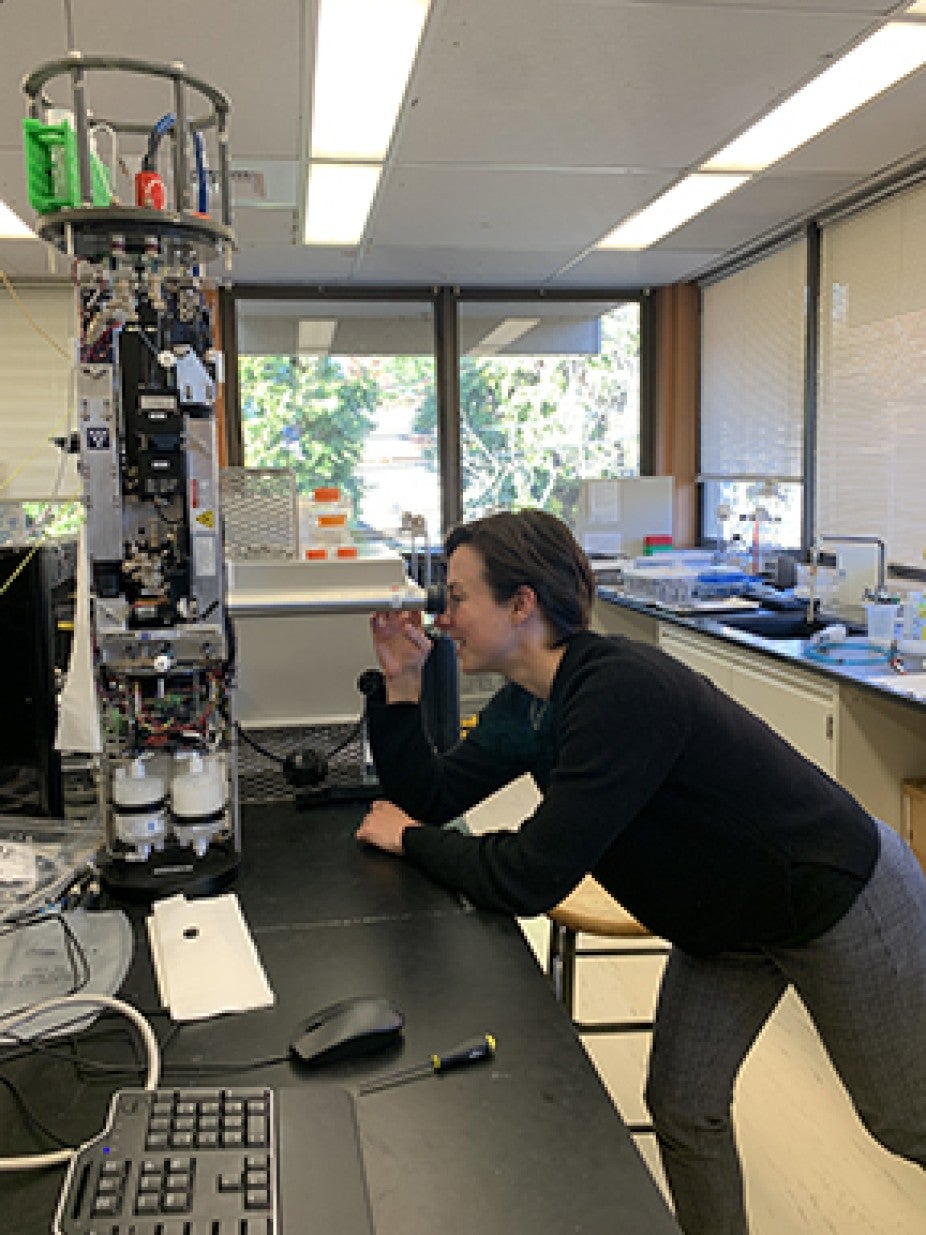
Fischer prepping their ocean robot, the Imaging Flowcytobot (IFCB), to take samples for their research.
Dr. Fischer explained the challenge kind of going forward for monitoring as a whole is that the traditional way of looking for HABs is by people taking weekly water samples, which are then counted and they get results two days later. By then it’s “too late to actually let a resource manager, know about a bloom.” Additionally traditional methods can not easily track whether a bloom is migrating vertically, so you “have a higher potential to miss things with the traditional ways of sampling.” It is for this reason the IFCB method is great, although expensive. Alexis is hopeful the cost will come down for it’s use, so that it can be more broadly implemented in tracking HABs.
When asked if there was anything in their childhood that led them to this career path, Alexis answered “I've been always very fascinated with just the alienness of ocean life. Ever since I was a child…we used to go tide pooling and go to the beach pretty regularly. That was always just such a highlight for me. I even had a pet a nudibranch, which it's like a sea slug.” The various adaptations of ocean creatures and what qualities made them a successful species in what environment captivated them, so applying this same curiosity to the study of phytoplankton made sense. In order to predict these blooms “we need to understand the weirdness of these species” and in doing so we can then “protect public health…I think in a nutshell, this is why I was excited about [my field of research] why I've continued with it.”
We appreciate all of your fascinating work Dr. Fischer and look forward to your findings as you comb through your data. Learn more about their work here.


